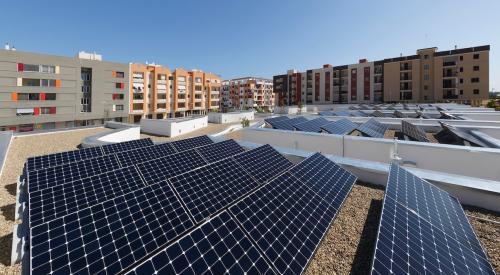The California Energy Commission recently announced the 2022 update of the statewide building energy code will require new buildings to use less energy and cut carbon pollution by transitioning homes off of fossil fuels. The Natural Resources Defense Council says building energy use accounts for a quarter of the state’s climate pollution and the toxic nitrogen oxide air pollution from buildings is seven times worse than all of California’s power plants. The energy code, which will go into effect starting Jan. 1, 2023, will require a minimum efficiency level of walls, windows, and heating and cooling equipment.
After its groundbreaking 2019 update that set requirements for rooftop photovoltaic solar panels for most new single-family homes, the 2022 update is taking the next step toward zero-emission new construction by tackling pollution from fossil fuels burnt for heating and hot water in buildings, and the associated fugitive emissions of methane, a potent climate pollutant that leaks from wells, pipelines, and homes, turbo-charging the climate crisis.
Keeping homes and other buildings warm in the winter and supplying hot water for showers and other domestic uses is currently responsible for the majority of energy use and climate pollution in buildings. Gradually switching from fossil fuels to clean super-efficient electric heating and hot water, known as building electrification, is the most realistic and least cost pathway to buildings than run on clean energy. The “renewable” gas pipe dream that vested industrial interests are promoting is needed to help decarbonize industrial uses of methane and hydrogen, but there isn’t enough of it for all sectors, and it would cost many times more than thoughtful electrification in buildings.
Biggest Changes in the 2022 Code
The biggest climate win in the 2022 code update is the shift to electric heat pump space and water heating: powering space and water heating with electricity that is already a lot cleaner than gas and will eventually be carbon-free offers a pathway to zero-emission buildings. An efficient heat pump will save at least 75% of greenhouse gas emissions over its life in California, compared with the most efficient gas furnace available, and probably more as the state accelerates its progress toward zero-carbon electricity. The electric space and water heating incentives apply to all residential buildings, whether single-family or apartment buildings of any size, and to select heating systems in non-residential buildings. More work is needed to expand those requirements to other types of heating systems used in larger non-residential buildings.













